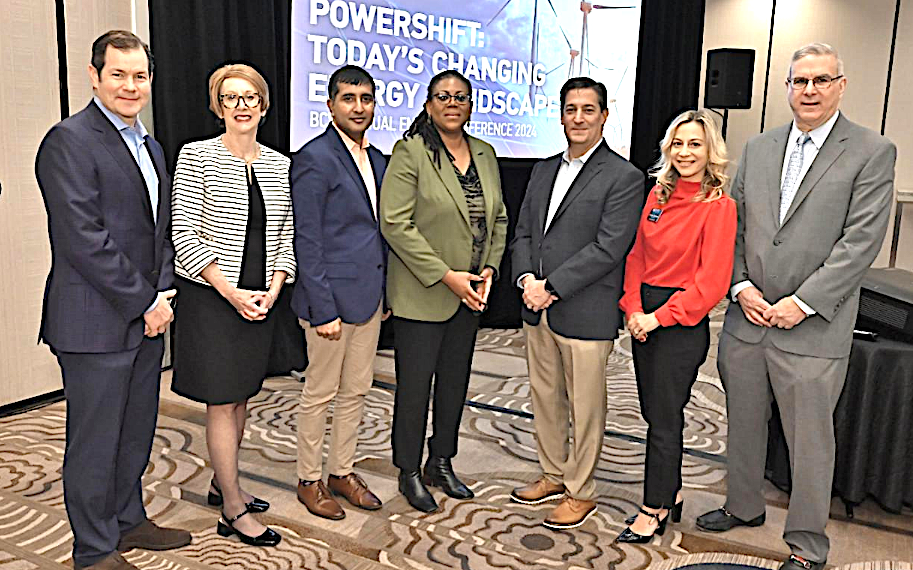Representatives from Con Edison, The New York Power Authority, Westchester County government and others seemed united in their belief that Westchester is headed for a bright future in transitioning to renewable energy during the Business Council of Westchester’s (BCW) annual Energy Conference held at the Sonesta Hotel in White Plains.
This year’s conference was titled “Powershift: Today’s Changing Energy Landscape.”
“If we are going to recruit businesses to come to Westchester County and the region, we need to demonstrate that we have a solid energy grid,” said John Ravitz, the BCW’s executive vice president and COO. “The single most important thing we can do now is engage in honest conversations about the timing for implementing the many steps required to become fully renewable. And that is what we strive for at this annual conference.”
Raghu Sudhakara, vice president of distributed resource integration at Con Edison, said that Westchester County is the top solar power generator in Con Edison’s service area, producing about 27% of the solar electricity generated in the utility’s service area.
“Con Ed is firmly supportive of our customers’ desires to make this transition through 2040,” said Sudhakara. “We will be uncompromising on the safety and reliability aspects of the energy system, even as we enable the transition (to renewable energy).”
New York’s clean-power transition is guided by the Climate Leadership & Community Protection Act, a 2019 law that commits New York to 100% zero-emissions electricity by 2040, among other provisions. Ravitz and the BCW have repeatedly cited studies proving that the law is unrealistic.
The BCW has urged state leaders to change the law’s implantation dates to give New Yorkers time to build the necessary renewable infrastructure. The BCW has also asked for legislation that prevents communities from blocking battery storage and solar farm applications so that the infrastructure can be built.

Daniella Piper, executive vice president and chief innovation officer at the New York Power Authority which is headquartered in White Plains said that the current Texas wildfires are yet another example of extreme events that will happen unless greater efforts are made to combat climate change by ending the burning of fossil fuels.
“According to the World Economic Forum, the global cost of climate change damage is estimated to be between $1.7 and $3.1 trillion per year by 2050. So, there is cost to the transition and there is cost to doing nothing,” Piper said.
Dan Singer, CEO and president of Robison, said that he welcomes a debate about how to implement renewable energy.
“As everybody comes to the table with honest intentions to help our society get to the goals in a way that is not pushing one particular agenda over another, but rather what’s going to be in the best interest of our constituencies, this is the part of the debate we like,” Singer said.
Christina Armentano, COO and executive vice president at Paraco Gas Corporation based in Rye Brook, said that since its founding in Westchester in 1968, Paraco has grown to be the 13th largest propane company in the nation. It has 120,000 residential customers and 27 distribution locations in eight northeastern states. Armentano pointed out that residential customers consume 54% of propane and that propane has a drastically lower carbon footprint than other fossil fuels, adding to its viability as a fuel source.
Mike Richter, president of Brightcore Energy, which provides clean energy installations and services, said, “People fail to realize just how large this problem is and how far we need to go. That idea of taking small bites of the elephant is exactly right. Unfortunately, we haven’t started eating until a little bit late, and so now we have to have a big meal because we’re running up against real problems.”
Kevin Hale, director of economic development and strategic partners at the New York State Research and Development Authority noted that since 2019, there have been 40 clean energy supply chain project announcements totaling over 8,000 jobs and $4.9 billion in investment. He also said that projects that demonstrate carbon emissions reductions can qualify for awards ranging from $500,000 to $5 million.
Bridget Gibbons, Westchester County’s director of economic development, discussed the county’s active role in supporting a broad range of climate and energy-related action programs. She said one county program will offer job training designed to benefit both workers and employers in the energy field.
Luke Falk, senior vice president at Clean Path NY, spoke about the ongoing efforts of the pubic-private collaboration between the New York Power Authority, energyRE, and Invenergy. Clean Path has more than 20 wind and solar generation projects in New York. He said that Clean Path’s efforts will reduce the need for electricity to be generated by burning fossil fuel to be cut by 20% annually.


















